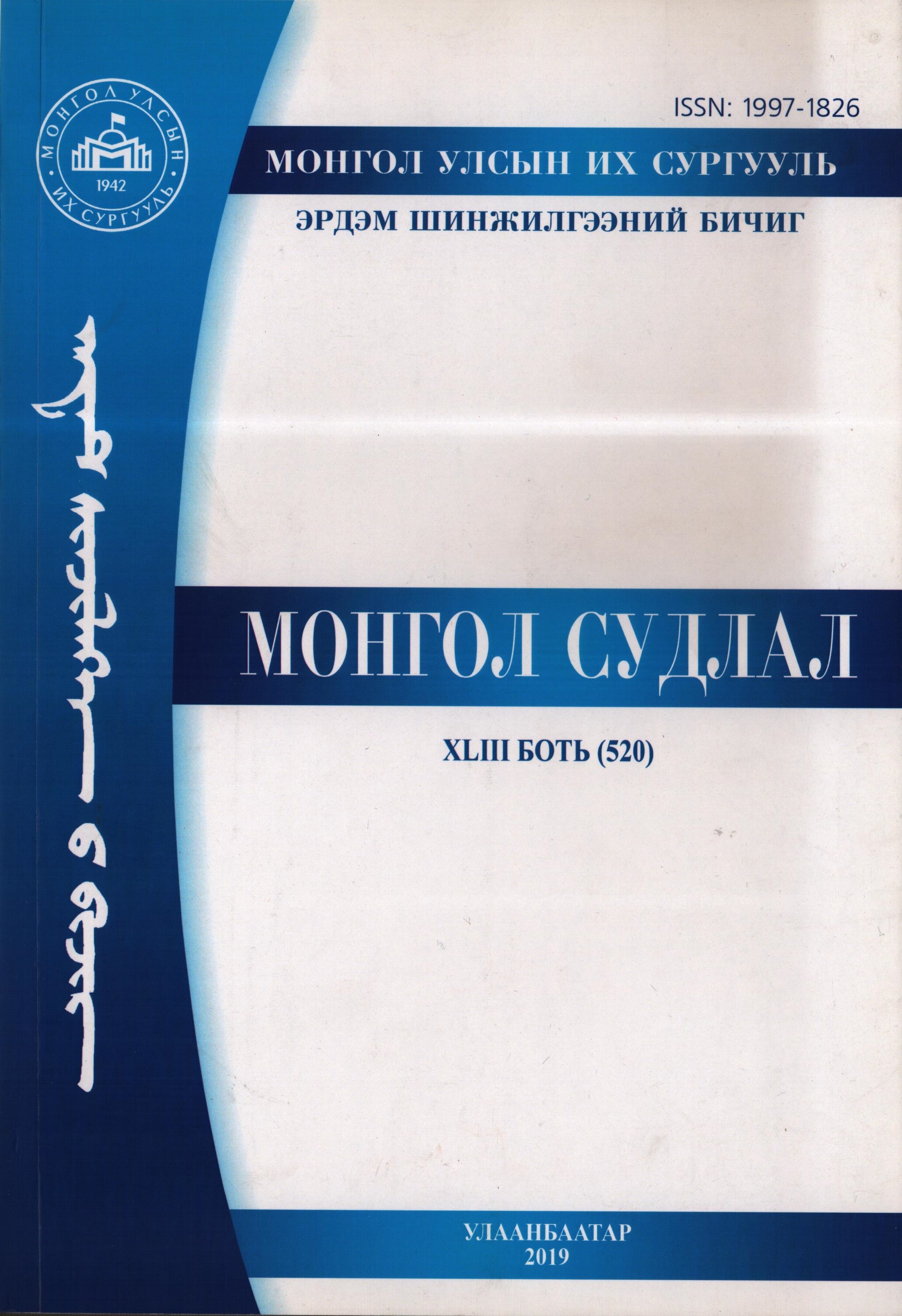The contrastive analysis of collocations of Korean and Mongolian
Keywords:
Korean, MongolianAbstract
Taking the Korean collocations related to “Mind (Maeum)”, this thesis has examined the semantic and syntactic correspondence aspect of the examples to the Mongolian counterparts, reviewing the regular collocation correspondence aspects that appear between collocations. Additionally, this thesis has explained in detail on expressions that do not correspond to their literal translation with the examples.
As it is pointed out in the earlier segment, collocation is the language expression that is used frequently in daily life, while it is difficult to comprehend and use for foreigners. The purpose of this research is to aid Mongolian learners who are learning Korean by clarifying the correspondence relationship of collocations related to “Mind (Maeum)” in both Korean and Mongolian language, and the result is as follows.
Among definitions of the Korean noun “mind (Maeum) ”, the definition that showed the most collocation composition was “emotion, attitude” (36 cases), followed by “focus, (autonomous) effort” (26 cases), “characteristic, personality” (10 cases), “space of emotion” (9 cases), and “interest” (8 cases).
In terms of the semantic correspondence aspect, the Mongolian expression, “сэтгэл, ” was used the most. In some cases, “сэтгэл” was not used and the correspondence was made only with a verb. In terms of the syntactic correspondence aspect, the most frequent case was “verb + noun —> verb + noun” (29 cases), followed by “noun+verb —> noun+verb (liberal translation)” (19 cases). There were twelve cases of the word-to-word correspondence in “noun + adjective —> noun + adjective” type, followed by eleven cases of “substantive + predicate —> verb (adjective), ” and ten cases of the “substantive + predicate —*■ substantive (liberal translation) + predicate (liberal translation). ’’Additionally, there were three cases of “noun + predicate —> noun (liberal translation) + predicate, ” three cases of “noun + adjective —> adjective + noun, ” and one case of “noun + adjective —> noun + adjective (liberal translation).
The examination of the syntactic correspondence aspect shows that the Korean and Mongolian expressions are mostly in the word-to-word match, along with some exceptions that require the liberal translation to understand the meaning due to the characteristics of the collocation.
Since understanding the special co-occurrence relationship of the collocation, as presented above, helps the Korean language learners in improving their fluency, there is a need to expand the range of research collocation expression relationship between the Korean and Mongolian language as well as refining the elements of collocations upon covering them.
It is expected that such progress will play a pivotal role not only in Korean language education but also in translation/interpretation, dictionary compilation, and study guiding.





